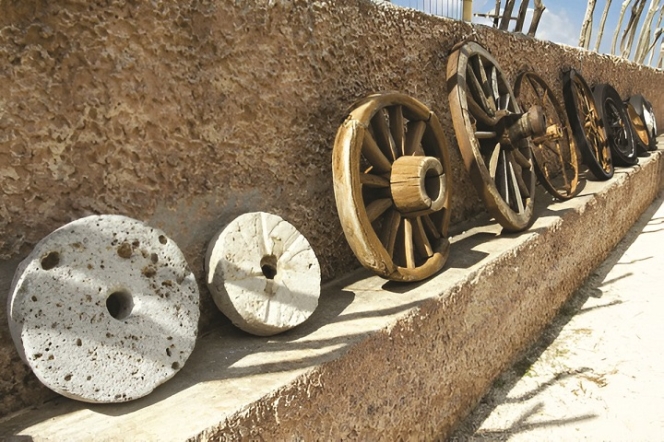
A SYNERGISTIC ALLIANCE
If my fading memory serves me right, I think I may have written at least two articles during past four years on the theme of tyres and mobility. When I step aside from the technologist’s mentality and look at tyres and mobility from a bystander’s perspective, I am convinced that it leads to some interesting insights. The connotations on the subject seem inexhaustive, which reminds of the different reflections from the different facets of a well-polished red ruby or a blue sapphire, some precious stones for which my country Sri Lanka has been famous from the ancient times.
 Right from the dawn of life on earth, mobility has been a key driver for progress and survival, not only for humans but for all living beings. The ability to move has significantly changed the course of history and the evolution. Mobility is deeply embedded in every life form, from the lowest, starting from viruses and bacteria, to the highest form of life, presumably the humans. Even the stationary plants depend on mobility for their sustenance and propagation, as we learned in our lessons of Botany a very long time ago. Pollination and the distribution of seeds by wind, water and animals enable plants to colonise new locations. And through intricate vascular systems within the plants, water and nutrients are transported, which demonstrates the importance of internal mobility for their growth.
Right from the dawn of life on earth, mobility has been a key driver for progress and survival, not only for humans but for all living beings. The ability to move has significantly changed the course of history and the evolution. Mobility is deeply embedded in every life form, from the lowest, starting from viruses and bacteria, to the highest form of life, presumably the humans. Even the stationary plants depend on mobility for their sustenance and propagation, as we learned in our lessons of Botany a very long time ago. Pollination and the distribution of seeds by wind, water and animals enable plants to colonise new locations. And through intricate vascular systems within the plants, water and nutrients are transported, which demonstrates the importance of internal mobility for their growth.
The inherent capacity of animals to move has offered them a definite advantage by enabling them to search for food, mates and seek safety. Animal migrations such as birds flying to warmer climates during winter, salmon returning to their spawning grounds and the breathtaking migration of wilder beast in East Africa, which I have personally witnessed in Kenya, shows the critical role served by mobility for their survival – an evolutionary trend transmitted to the early humans for their survival. Epic migrations of the humans have led to the spreading of humanity across the continents and establishment of the ancient civilisations in the Indus Valley and Mesopotamia etc. Thus, it can be seen that mobility has played an intrinsic role on life on earth, fostering diversity and adaptation.
From another perspective, mobility on earth is not confined to life forms only but is influenced by extraterrestrial or celestial phenomena such as gravitational forces and the influence of cosmic bodies such as the solar system. It is known that the early human communities depended on the patterns of the tides for fishing, and the travellers and traders relied on the movements and the positions of the stars for their navigational purposes, demonstrating how the cosmic bodies influenced the early earth’s mobility dynamics. The need for mobility has been intricately linked with human civilisation, impacting political, social, economic and cultural dynamics. Ancient epics like the Mahabharata and the Ramayan have vivid descriptions of horse-driven chariots, which, emphasises the importance of wheels in mobility. The wheels apparently made of wood and iron rims can be considered as the forerunners of the modern-day tyres.
Mobility has always helped in shaping civilisations, politically by enabling the expansion of empires and socially and culturally by the exchange of ideologies, traditions and goods. For instance, the Silk Road was not just a trade route but played the role of a cultural bridge between the East and the West. Economically, it enabled the gradual emergence of the foundation for the global trade systems by enabling transportation of goods over long distances.
And coming to the relatively modern times, the impact of the Newtonian Laws of Motion on practically every aspect of human mobility and mechanisation including the locomotion and the development of the internal combustion engine and eventually the automotives is widely accepted.

Man’s never-ending quest for making life more comfortable and the role of mobility and transportation has served as a key driver in many areas such as political, economic, social and cultural aspects. The increased efforts in producing synthetic rubber to develop a substitute for natural rubber (NR), which was in short supply during World War 2, for catering to the demand for tyres to be used for military purposes is a good example. Even in the ancient times, mobility has played a vital and critical role in warfare, where in addition to the infantry, horses, elephants and horse-driven chariots have been used to develop a comparative edge, as depicted in the great Indian epics.
The subject of tyre technology has always been a realm of mystique intrigue to us the students from the non-tyre sector during our study days in the late sixties. Pneumatic tyre was introduced to us as the most complicated and composite rubber product developed in the rubber industry during those days, a fact which I think still holds true despite the later developments in aerospace and bio-medical applications etc. The Ceylon Tyre Corporation, which was set up with Russian assistance, was the only pneumatic tyre manufacturing company available in Sri Lanka during those times, and this provided us facilities for learning about the practical aspects of tyre technology. It was a used plant relocated from Russia, and some of the newly selected staff were given an initial training and familiarisation in Russia. What was impressive and puzzling to us the non-tyre people was the vastness of the scope of processing and operations, and it was no secret that I skipped answering the questions on tyre technology in examinations.
The term ‘technology’, often used to have a connotation of elatedness, and some distancing or isolation from the norm, even in the modern times of mass communications. I feel that specialisation in the rapidly expanding disciplines, especially related to ICT, has further caused the deepening of this apparent chasm. The widely accepted view in the industry or in running a country is that technology is the panacea for solving our current problems and for achieving development. This latter view, of course, is open for a further deliberation at a later occasion.
Technology is very often regarded as an invention of the modern day, emerging mainly during the industrial revolutions of the 18th and 19th centuries and accelerating during the recent periods of Industry 3.0 and 4.0. While there is no doubt that these eras brought remarkable advancements in technology, the concept of technology can be considered to have been intrinsic to the human evolution. In very basic terms, technology is about finding methods to perform tasks and accomplish outcomes more efficiently, making the processes easier, faster, safer and cheaper. We are very familiar with how the early humans developed stone tools and fire-starting techniques, which may have marked the dawn of technological thinking, and hence the name given to them ‘Homo sapiens’.
Among the most significant technological breakthroughs, the invention of the wheel stands out as the cornerstone of mobility. The wheel was invented in the 4th millennium BC in the lower Mesopotamia (modern day Iraq) during what historians identify as the Bronze Age by the Sumerians, and by this time, humans have already mastered the domestication of animals and plants and were living within social hierarchies.
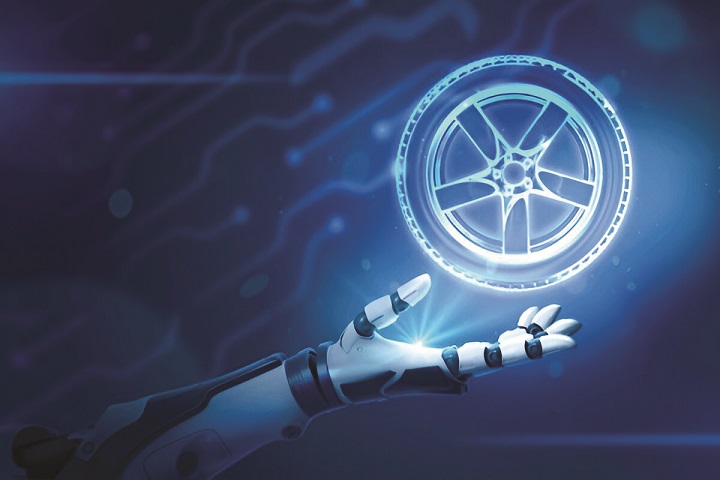
As the various human societies evolved technologically based on their specific socio-political, economic and cultural backgrounds, so were their mobility needs, and sometimes it becomes incomprehensible to decide which came first, technology or mobility, where we are faced with the ‘hen and the egg’ scenario.
The earliest wheels were made of wood and later reinforced with metal rims for stability and durability. I can still vividly remember our school days when we used to travel in oxen-driven ‘buggy carts’.
Charles Goodyear’s discovery of vulcanisation in 1844 had a profound effect on the manufacture of rubber products and would certainly have been contributory to the development of the first pneumatic tyre by Dunlop in 1888, which was first used on bicycles. Pneumatic tyres paved way for tyres to become more flexible, resilient and durable – the ideal prescription for modern transport systems. In the 20th century, pneumatic tyres became the standard, offering improved performance, comfort, safety and reliability. Tyres evolved further with the subsequent advances in the automotive technology, and today’s tyres are designed and engineered with new developments such as runflat technology, eco-friendly materials, smart sensors that monitor tyre performance in real-time, self-sealing tyres, non-pneumatics and advanced tyres for EVs and autonomous driving.
The development of tyre technology and emerging needs of societies for improving mobility needs are synergistic as changes and advancements of one area very often seem to drive the progress of the other. It is also an inevitable trend that the prioritisation of sustainability, a movement that has emerged over the past four decades, is rapidly influencing all the areas of tyre technology and the mobility requirements.
Societal needs are instrumental in inspiring technological advancements, and tyre innovations in turn are empowering societies to strive for sustainable and efficient mobility, and both seem to work hand in hand to face the challenges of a rapidly changing world.
From the rudimentary wooden wheels of ancient chariots to the high-tech tyres of today, the journey of tyre technology mirrors humanity’s relentless quest for progress. As we continue to explore new frontiers in mobility, the humble tyre remains a testament to the enduring relationship between technology and human innovation. Understanding the historical significance of tyres and their technological evolution enables us to gain deeper appreciation for the intricate ways mobility has shaped our world, politically, socially, economically and culturally. It is not just a narrative or episode of technological advancement but also a chronicle of human ingenuity and mankind’s timeless desire to move forward.
The author is a Management Counsellor from Sri Lanka.
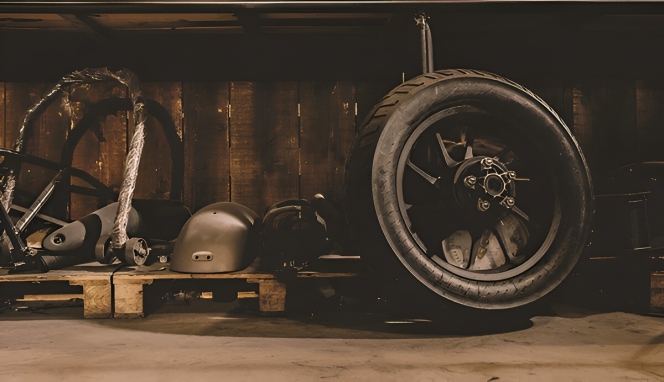
Fifty-seven years ago on 1st September 1968, I joined the rubber products manufacturing industry in Sri Lanka (then Ceylon) as a trainee in a medium scale footwear company. The only knowledge or rather awareness I had of rubber until that time was seeing the tapping of trees, adding a pungent liquid to the milky liquid, put on metal trays, squeezing the whitish slab of material through two rotating metal rollers manually rotated by a crank and putting them in a smoke shed that was available in some backyards to end up with a striped brownish sheet of rubber, which I later learnt was known as RSS. Later, in the early sixties, during our Organic Chemistry lessons, we learnt that C5H8 is the formula for Isoprene, which is the building block of natural rubber. Going down the memory lane of the past 57 years of knowledge acquisition in the rubber industry might turn out to be an exhaustive exercise. However, it is my sincere hope that some of my experiential insights might help the modern-day managers to seek areas that may strengthen their foundations in this era of rapid shifting sands.
I should say I am at a loss in finding an appropriate definition of knowledge from the vast interpretations which appear to be too academic. One practical and easy to understand definition I have come across in that knowledge is the ability to understand, apply and transfer information and experience to solve problems and adapt to changing circumstances, Merely the possession of facts is meaningless. It is the skill of using them effectively for survival, development and progress that is more important. It reminds me of the many research findings and innovations that are gathering dust in many institutions. In the case of early humans, knowledge emerged through direct observation of nature, trial and error and sharing same with groups. In my opinion, the context has virtually been the same over the ages, although the scope and the contents have undergone drastic changes during the course of human history, particularly through the four industrial revolutions and apparently heading for an unprecedented and a somewhat incomprehensible future.
If I am asked the question how I have acquired knowledge during my working life, I would say without any hesitation that it was through a process of osmosis. Those who studied botany under the biological sciences may perhaps vaguely remember how plants absorb water, minerals and other nutrients from the surrounding soil through their root systems by the process called osmosis. In a similar manner, we also acquire knowledge from the external environment through our sense facilities, namely the eyes, ears, nose, tongue and the skin, and through perceptions, which are processed by our brain and the central nervous system. The Buddhist doctrine gives a clear description of this process, which are well in line with the biological and physiological sciences. I, however, would not wish to go in to a philosophical deliberation at this point of time. Knowledge acquisition is a lifelong process with the ‘cradle to grave’ concept, and according to the modern scientific findings, starting at the moment of our conception in the mother’s womb.
I would now endeavour to delve a little into the knowledge acquisition modalities available to us trainees during our formative days of the career in the rubber industry from the late sixties onwards. The modern rubber technologist (if the term is still in use) may perhaps find them archaic as if they are viewing the archaeological remnants exhibited at a museum. It was hands-on experience from the beginning in what was termed a 3D industry, namely dirty, difficult and dangerous. This was mainly due to the particulate and dusty nature of the various fillers used such as carbon black and the toxicity of the rubber chemicals, coupled with the usage of high energy consuming motor driven machinery, both electrical and heat, usage of steam and compressed air, emission of high noise and vibration, fumes and high material load in some industries such as tyre manufacturing and tyre re-treading. The complexity and diversity are further aggravated by the macromolecular nature of both natural and synthetic rubber, which necessitates the somewhat illogical steps of breaking and remaking using a vast array of heterogeneous raw materials to facilitate the processability and for achieving the performance requirements of the products, some of which are of highly composite nature. As a consequence of the above, rubber product manufacturing industry was not at all the preferred choice for young school leavers like me. Hence, my entry into the rubber industry was due to the pure necessity of finding employment. However, the practical involvement with the identification and weighing of the multitude of rubber raw materials somehow had its attraction for me, which prompted me to read the limited number of text books and supplier literature that were available at that time. The real turning point in my career in the industry was the opportunity I got to follow the two-year part-time course at the then Ceylon College of Technology (now a university) to study for the Licentiate of the Institution of the Rubber Industry, LIRI (UK). This was equivalent to a full time BSc today. We were very fortunate to have three well-respected and dedicated teachers of the day in our quest for the acquisition of knowledge. Teaching was a noble profession for them, and I am very proud to state that their photographs adorn the entrance to the auditorium at the Plastics and Rubber Institute of Sri Lanka, where I joined as student in 1969 and ended up as its President for the year 2024.
Another remarkable feature during those days came in the shape of representatives from well-reputed giants in the raw material manufacturing companies such as Bayer, ICI, Monsanto, ACCI Rhien-Chemi and Polysar, names which to my knowledge are not existing now, or may be as mergers. These were invaluable opportunities for us the young technologists to gain the technical knowledge and discussion about the technical problems. The short technical sessions conducted by some of them in the evenings were eagerly awaited occasions during our days to share knowledge over a cup of tea. I am a little puzzled whether some of the similar events conducted online as webinars have the same effects or if at all that personal rapport.
The Bayers Technical Programme conducted annually at Thane, India, during those days was another avenue for gaining very valuable theoretical and practical knowledge, and I was fortunate to associate with prominent professionals such as R R Pandit, who left this world a few years ago, and Dr S N Chakravarthy.During my working with the Bata Shoe Company of Ceylon for 12 years, I had the opportunity to represent the company at a few of the Regional Technical Meetings held in the Far East. These were invaluable platforms for sharing knowledge and information of the technical developments of the individual companies. They were also enjoyable opportunities for networking and building up some lasting relationships. After following the programmes, it was compulsory that we give a presentation to the management and staff about our learning experiences, and more importantly, to plan development activities, the success of which was one criterion for our individual performance evaluation. Knowledge by itself is not power unless it is shared – a truism that will not apply to politics and the intelligence services. I well remember the case in a place I worked later about how some staff members who were sent to Japan for training deliberately skipped sharing what they learnt at company expense with the fellow staff members despite the several reminders.
As a passing remark, I may mention that my period of working in the tyre retreading and rubber products manufacturing companies in Kenya (for about 14 years) offered me the good opportunity of working with multiethnic communities while imparting my knowledge to train and develop staff members.
Now, coming to the global rubber product manufacturing, it can be seen that the focus on mixing, curing and reinforcement knowledge requirements has expanded into a multidisciplinary portfolio over the past 50 years, and the quest will continue. It is not prudent to do comparisons as ‘now and then’ because knowledge acquisition and its management is heavily dependent on the needs and requirements at any particular era or period of time. Unlike in our generation, a vast knowledge base, which is sometimes bewildering, is available at the touch of a fingertip for the modern-day managers, and apparently, most of it is related to their work and operational activities. My discussions and chats with many managers reveal the fact that they are overburdened with their daily activities and are working at different stress levels. They seldom seem to have any time or opportunity to integrate their work with the core values such as respect, gratuity and empathetical understanding.
The famous quote of Sir Issac Newton comes to my mind at this juncture: “If I have seen further, it is by standing on the shoulders of Giants.” He wrote this statement in a letter to Robert Hooke in February 1675, acknowledging that his own scientific discoveries were built upon the work of his predecessors, a sentiment that symbolises humility and scientific progress.
Knowledge and discipline go hand in hand. How to use knowledge appropriately needs discipline to comprehend. The consequences of using knowledge for the sake of knowledge, purely for application to industry, without giving due recognition to humanity and our core values is surfacing rapidly at the cost of trust, wellbeing, harmony and human development in every aspect of human activity, both locally and globally. In this respect, I remember the famous line from the poem, The Rime of the Ancient Mariner, by Samual Taylor Coleridge, which we happened to study in our literature class a long time ago.
‘Water, water everywhere and not a drop to drink’ illustrates the irony and anguish of being desperately hot and thirsty whilst being surrounded by nothing but ocean.
The author is a Management Counsellor from Sri Lanka.

Service is being there to assist the client to experience less lost profit. Some may say pain; obviously, of the financial kind and not physical kind.
Navigating life’s challenges becomes considerably more complex when a flat tyre comes into play. Preferably first thing in the morning, as the tyre’s lost its pressure over night. The tyre wasn’t capable of delivering its usual level of service when you required it to do.
A tyre service delivery has the client’s wellbeing in mind when managing the usually large asset for a fleet operation that is known as ‘TYRES’. From initial selection through procurement service and end of first life, decisions are required based on experience, knowledge and data. Supply alone cannot support such an operation requiring service to monitor, measure, maintain and manage tyres in operation. In a round the clock operation, tyres don’t just operate on one shift.
Electronic surveillance is becoming part of daily life, no different for tyres. Uninterrupted service, but can you can stay awake long enough?
What has changed is the service a tyre now receives from tyre pressure monitoring. Operating at the appropriate pressure, a tyre can deliver the highest level of service it is capable of. The service provider now becomes the service receiver. Indeed, both are becoming the service controller with the delivery of smart tyres. The tyres provide service to the control systems of the vehicle, updating on current conditions and even considering what is to be experienced based on what the tyres are feeling, just as a human does, in delayed response.
THE SERVICE LOOP CLOSES.
Good service always should breed trust and respect and so loyalty. Unfortunately, sometimes prices come into play. As our industry knows only too well, quality is never (ever) low cost. If it’s too good to be true, it probably is. Is your (or someone else’s) life worth a fist full of money? Bean counters have a lot to answer for when it comes to tyre operations.
Service is supporting your client to assist them to generate a profit. Would you turn away someone who helps you make money? So how do we assist to reduce the pain point? Real-time tyre pressure monitoring, know the issue before it becomes a problem, before the hazard threshold is crossed. With ease data can be streamed in real time. A tyre service centre is able today to alert a fleet operator that a tyre is in need of attention, before the situation develops into a catastrophic tyre failure. The nearest service facility can be alerted, the vehicle with the problem tyre already known to the service facility is attended to and returned to service. The service loop closes again. The tyres assist you making a profit, ergo a service provider.
Someone or something that makes my life better is to me a service provider. I consider that a reflection of the trust a client invests in their supplier to be a prime indicator of the level of service that is utilised. There are times when service is ridden rough shod over as price becomes the primary driver. Service suffers, returns from the tyre operations fall as tyre costs rise, though more importantly, machine availability drops. Remember, the sweet low price is long forgotten when low quality is found.
What is your level of service to your clients? Will they return to you or go looking elsewhere?
Our tyres rarely complain and endure the harsh conditions we ask them to operate in, without attention and generally without any care.
Remember the level of service your tyres provide to you and yours. Can you emulate this level of service provision to your clients, friends and family?
Take care, stay TyreSafe!
Driving Forward Through Uncertainty
- By Rajiv Budhraja
- September 04, 2025
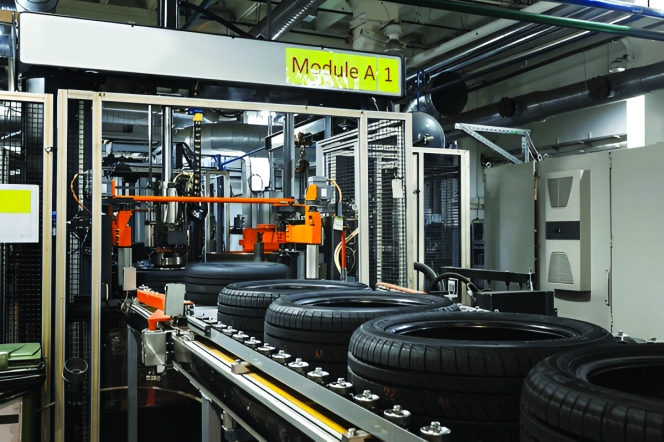
The past few years have not been easy for Indian industries. From post-pandemic recovery and supply chain issues to trade policy shifts and geopolitical conflicts, businesses across sectors have been navigating uncertainty. Yet, amidst this turbulence, the Indian tyre industry is emerging resilient – steadily carving out a global presence and positioning itself as a poster boy of India’s manufacturing story.
In the last one month alone, three developments have highlighted the strength, adaptability and future-readiness of the Indian tyre sector. Together, they offer a glimpse into an industry not only responding to challenges but also reimagining the road ahead.
Despite rising protectionism and the lingering aftershocks of disrupted global supply chains, Indian tyre exports have continued their upward march. In the last fiscal year, tyre exports from India have grown by nine percent year-on-year – a clear indication of global confidence in Indian-manufactured tyres. Tyre exports from India reached INR 250.51 billion compared to INR 230.73 billion in the previous fiscal, as per data released by the Ministry of Commerce, Government of India.
This isn’t just a story of volume. It’s a story of credibility – built on strong domestic manufacturing capability, world-class quality standards and a heightened focus on research and development.
Today, Indian manufactured tyres are competing with the best on parameters of performance, durability and cost-efficiency and providing a value proposition difficult to match. Indian tyres are exported to over 170 countries, with significant presence in the United States, European Union, Latin America and Southeast Asia. The US remains the top export destination, accounting for 17 percent of India’s tyre exports by value, followed by Germany (six percent), Brazil (five percent), UAE (four percent) and France (four percent).
With an estimated annual turnover of INR 1 trillion and exports exceeding INR 250 billion, the Indian tyre industry stands out as one of the few manufacturing sectors in the country with a high export-to-turnover ratio.
This export momentum has been further facilitated by the government’s active support in promoting domestic manufacturing through Make in India and other export-enabling reforms.
Perhaps nothing captures the maturing of the Indian tyre industry better than the recent global rankings by Brand Finance, the world’s leading brand valuation consultancy, which features four Indian tyre manufacturers – MRF, Apollo, CEAT and JK Tyre – among the world’s 15 strongest tyre brands. In fact, MRF, with a Brand Strength Index (BSI) score of 83.5, ranks as the third strongest tyre brand in the world after Michelin and Goodyear, according to the Brand Finance report.
This is not mere symbolism. It reflects decades of effort in building product trust, expanding global footprints and investing in brand equity. From high-performance radial tyres to off-the-road solutions, these companies are not just making tyres – they are shaping mobility experiences across geographies.
If the present is promising, the future looks even more exciting. A Vision 2047 report by PwC forecasts a CAGR of 11–12 percent for the Indian tyre industry over the next two decades. That is not just encouraging – it’s transformative.
This projected growth rides on several powerful drivers including rising demand from rural and semi-urban India, rapid growth in two-wheeler and commercial vehicle segments, a paradigm shift towards electric mobility and smart transport, greater OEM activity within India as global players deepen their localisation strategies and government policy support that encourages domestic production and discourages non-essential imports.
It’s also a growth that aligns with national priorities – self-reliance, sustainability and job creation.
India’s tyre industry is no longer playing catch-up. It is setting benchmarks. It is innovating, expanding and winning trust in markets around the world. It is making bold bets on sustainability, supply chain resilience and digital transformation. Tyre manufacturers in India have collectively invested nearly INR 270 billion over the last 3-4 years. These investments, spanning both greenfield and brownfield projects, highlight the industry’s confidence in India’s long-term growth potential and the industry’s commitment to capacity expansion and technological advancements.
As we steer towards 2047 – India’s centenary of independence – the tyre sector stands ready to play a pivotal role in the journey. One that connects not just places but aspirations.
Rajiv Budhraja is Director General of the New Delhi-based tyre industry association, Automotive Tyre Manufacturers’ Association (ATMA).The views expressed here are personal.
Engineering Giants: OTR Tyres… The Science Behind Extreme Performance
- By Ertugrul Bahan
- August 15, 2025
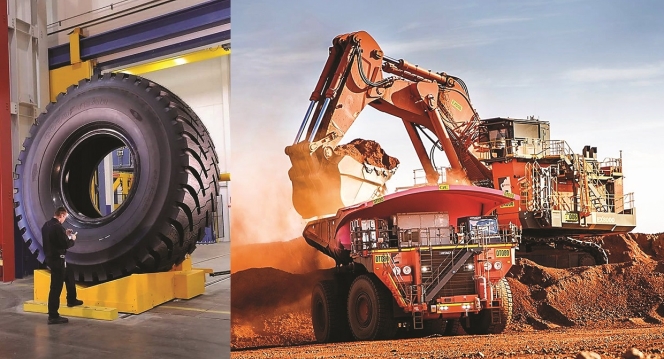
OTR tyres, rugged design and advanced technology that withstand the most demanding conditions... From mining to construction, these giant tyres play a critical role in keeping industries running smoothly.
What does the term ‘off-road tyre’ mean to us? Giant, robust, special and imposing – a tyre for heavy-duty vehicles. While there are already some tracked loaders and cranes on the market, stationary work, excavation, loading and transport are carried out with mobile machinery in open-pit mines or on heavy-duty construction sites. Transport vehicles, cranes and large-capacity loaders are always equipped with robust and durable rubber tyres. The last 50 years have seen a true revolution in the off-road tyre segment, as tyres have become larger every decade. Newer dump trucks have higher load capacities, requiring the installation of larger tyres to meet this growing demand.
Today 3,500-plus hp engine big haulers loaded carriage capacity reaches to 400-plus tonnes equipped with a tyre such as 59/80R63 extra load size. Such trucks are coupled with loaders having a shovel capacity of 60 tonnes on open pit areas. These load capacities are enormous, and the new generation of trucks offers even more. Tyre sizes up to 63/80R63 or some other size combination with low platform and wider dimensions are in the market.
Thirty to 40 years ago, tyre sizes for 50-80-tonne haulers were around 36.00-51 or smaller. Today, we are talking truck carriage capacities of 450-500 tonnes with hybrid engines. More efficient AC electrical drive haulers and having tyre sizes up to 70-inch rim size tyre are on the pipeline. These vehicles will be able to accommodate tyres with a diameter of over four metres, a weight of over 5.5 tonnes and a load capacity of over 120 tonnes per tyre.
High-tensile reinforcement materials and new generation rubber compound technologies play an important role in these revolutionary developments.
Extreme conditions, extreme performance, heat and puncture resistance for uninterrupted operation... This is how OTR tyres master harsh environments (quarries, mines, construction sites).
Tyres for open-pit mining, underground mining and construction remain separate categories. Their dimensions and basic requirements also vary. However, load capacities and the number of autonomous structures with electric motors and ultra-wide tyres are steadily increasing. The use of advanced materials in self-monitoring tyres with integrated pressure and wear sensors will become more widespread. Giant radial tyres for electric vehicles will proliferate on the market.
Tyre demands for extreme load-bearing capacity, improved cut and tear resistance (against sharp, abrasive stones) and improved heat dissipation through deep tread patterns will increasingly prevail, in line with customer demands. While the tread depth of off-road tyres was only 50 to 60 mm in the 1970s, today’s deep-tread off-road tyres reach 100 to 110 mm. Radial construction with new compound and heat dissipation technologies enables off-road tyres with deeper tread patterns, which also represents a significant advantage for the circular economy. Low-temperature off-road tyres also offer higher and multiple retreadability.
Both bias-ply and radial off-road tyres face significant challenges such as heat, abrasion, traction, sidewall cuts and fire protection. Although current off-road tyre technology has advanced significantly compared to earlier radial off-road tyres, some brands use bias-ply reinforcement layers, primarily on the sidewalls or tread, for improved cut resistance. Bias-ply off-road tyres remain preferred for certain applications, particularly forestry and some mining tyres.
Titan International (USA) underscores its strong presence in the truck tyre market with its Mining & Construction Bias division. This underscores the strategic priority of these specific applications in the OTR tyre market. In the US, Titan focuses on cut-resistant compounds and special tread patterns for rock environments that perfectly meet the most stringent performance requirements of bias construction.
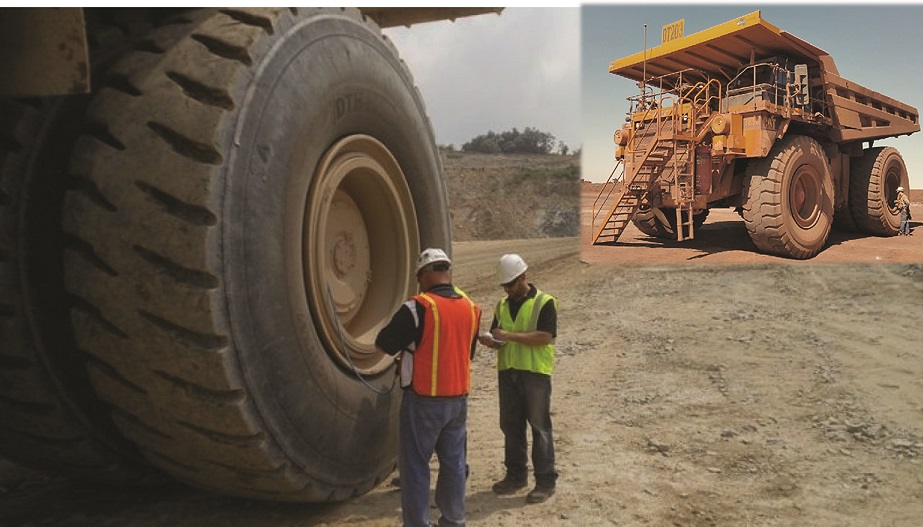
Michelin, Bridgestone and Goodyear dominate the OTR tyre market, with demand varying regionally. Large tyres for mining, underground mining and construction require durability, heat resistance and smart technology to meet the changing needs of the industry.
Michelin, Bridgestone and Goodyear dominate the global OTR tyre market, but Continental and BKT are also important players. Titan, Yokohama, the Chinese company ZC Rubber and the Indian company Apollo are other niche players that could disrupt global markets with more affordable alternatives. Furthermore, regional demand varies considerably between Asia, North America and Europe due to different mining, construction and regulatory environments. This benefits the different brands, whose combined commercial and technological strengths differ.
Michelin, Bridgestone and Titan (North America and Australia) produce giant mining tyres up to 63 inches wide. BKT, Apollo and ZC Rubber produce low-cost mining tyres in Africa, Latin America and India. Michelin and Bridgestone generally offer smart, autonomous tyres in North America and Europe. Yokohama and Continental (Japan and Scandinavia) offer underground and speciality tyres.
For open-pit mining, powerful electric-powered dump trucks and wheel loaders will offer exceptional load-bearing capacity (over 100 tonnes per tyre). They feature cut and chip resistance (against sharp, abrasive rocks), heat dissipation and a deep tread pattern, which will become increasingly popular.
Underground mining vehicles with narrow low-profile tyres and dump trucks (LHD), on the other hand, will be equipped with compact, fire-resistant low-profile tyres. Their low flammability, puncture resistance and high manoeuvrability will also be important criteria.
Large Scale Construction vehicles like massive dozers, graders, dumpers, articulated dump trucks and motor graders will need high traction tyres for both mud and loose surfaces with reinforced sidewalls to avoid cuts and having high longevity (mixed on road/off road use).
OTR tyre manufacturers compete on durability, profitability and performance. Their primary challenges are extending tyre life, optimising fuel efficiency and reducing wear.
All of the major OTR tyre manufactures need to compete in this high demanding segment of the tyre industry. The biggest challenge in every segment is achieving a long service life without tyre failure. Improved traction and rolling resistance, as well as reduced maintenance requirements, are real advantages.
The cost of a set of tyres is always divided by the total number of labour hours to determine the unit cost per tyre hour. Various parameters influence tyre and other operating costs. To minimise fuel and tyre costs in mines, better road maintenance, operator training in environmentally friendly driving (acceleration/braking), monitoring tyre pressure and loading and the use of predictive analytics (telematics to measure fuel consumption and tyre wear) are essential.
Overloading increases tyre stress, accelerating wear and fuel consumption. Poor road conditions with potholes and spills lead to more cuts and flat tyres, increased rolling resistance and higher fuel consumption. Harsh acceleration or braking always leads to overheating and faster wear. Although large radial-body trucks cost nearly USD 100,000, every preventative measure and maintenance is essential for business reasons.
Innovations such as RFID, flame-retardant compounds and environmentally friendly materials are driving the industry forward. OTR tyre manufacturers compete with specialised designs: mining tyres must be cut-resistant, earthmoving equipment must be durable and port tyres focus on efficiency.
Tyre manufacturers must survive in this highly competitive and demanding industry. Mining tyres are exposed to extreme conditions and require cut resistance thanks to highly abrasion-resistant compounds and additional steel belt layers. Earthmoving tyres require flexibility and durability thanks to all-season tread compounds and rock-resistant designs. Port logistics tyres feature low rolling resistance and chemical resistance thanks to lightweight steel belts. RFID tracking offers real advantages for tyre tracking.
Innovations for niche applications are also essential for brand building and address specific challenges. Some underground mining tyres feature non-marking and flame-retardant compounds for enhanced safety and performance. Arctic tyres require low-glass transition temperature polymers and microspike technology for better traction in extreme cold. As always, off-road electric tyres require improved efficiency and lower noise levels.
The use of recycled materials poses a real challenge for this segment, but more durable designs certainly reduce waste and replacement frequency. However, bio-based compounds and recycled rubber must be more widely integrated into new products.
Key trends in the OTR tyre segment include intelligent monitoring systems, environmentally friendly compounds and improved reinforcement techniques. Graphene-reinforced tyres promise extremely high strength and heat resistance. Sustainability will be a priority in OTR tyre manufacturing, with a focus on reducing environmental impact through innovative materials and designs.







Comments (0)
ADD COMMENT